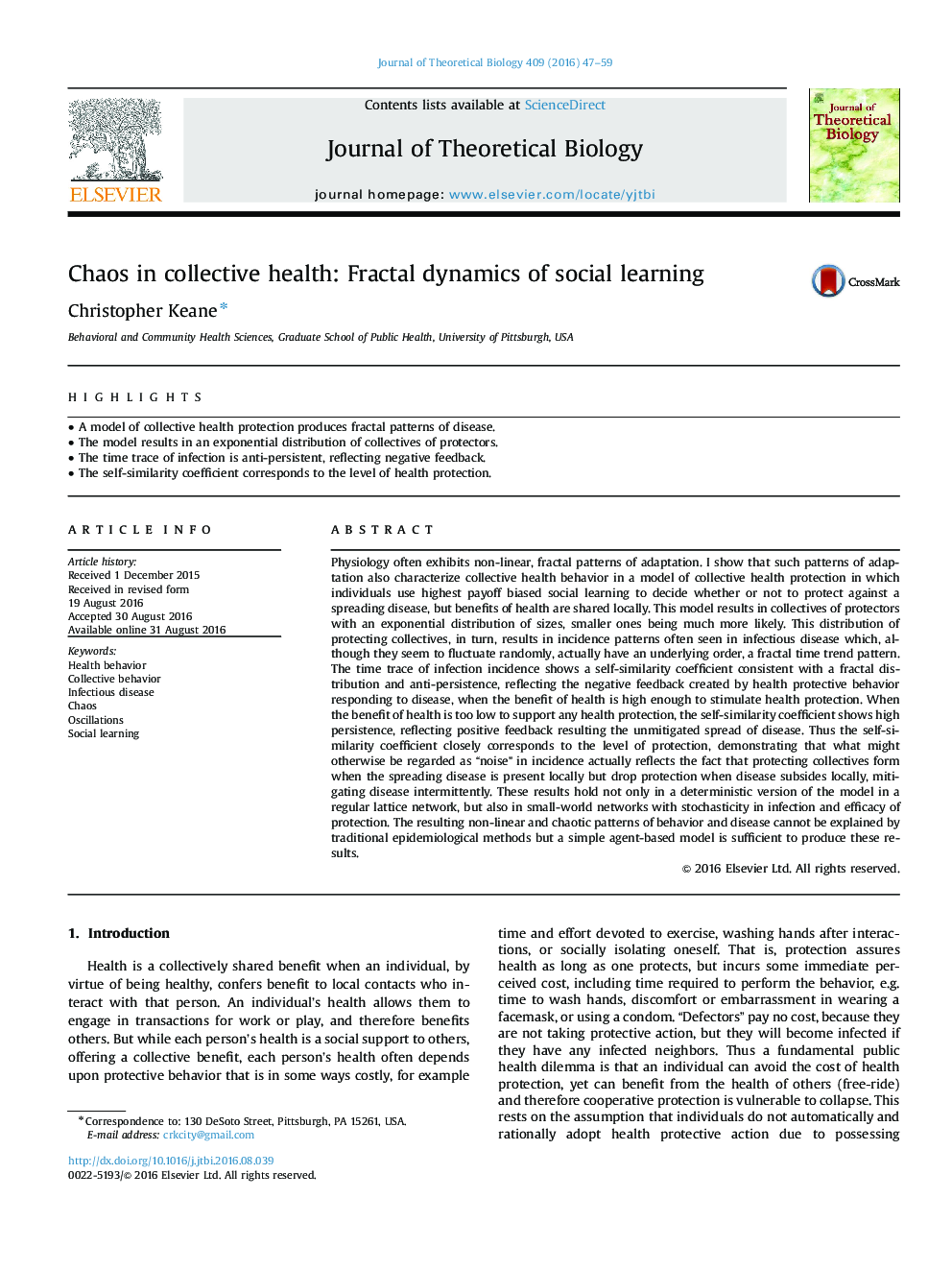| کد مقاله | کد نشریه | سال انتشار | مقاله انگلیسی | نسخه تمام متن |
|---|---|---|---|---|
| 6368864 | 1623801 | 2016 | 13 صفحه PDF | دانلود رایگان |
عنوان انگلیسی مقاله ISI
Chaos in collective health: Fractal dynamics of social learning
ترجمه فارسی عنوان
هرج و مرج در سلامت جمعی: دینامیک فراکتال یادگیری اجتماعی
دانلود مقاله + سفارش ترجمه
دانلود مقاله ISI انگلیسی
رایگان برای ایرانیان
کلمات کلیدی
رفتار بهداشتی، رفتار جمعی، بیماری عفونی، آشوب، نوسانات، یادگیری اجتماعی،
موضوعات مرتبط
علوم زیستی و بیوفناوری
علوم کشاورزی و بیولوژیک
علوم کشاورزی و بیولوژیک (عمومی)
چکیده انگلیسی
Physiology often exhibits non-linear, fractal patterns of adaptation. I show that such patterns of adaptation also characterize collective health behavior in a model of collective health protection in which individuals use highest payoff biased social learning to decide whether or not to protect against a spreading disease, but benefits of health are shared locally. This model results in collectives of protectors with an exponential distribution of sizes, smaller ones being much more likely. This distribution of protecting collectives, in turn, results in incidence patterns often seen in infectious disease which, although they seem to fluctuate randomly, actually have an underlying order, a fractal time trend pattern. The time trace of infection incidence shows a self-similarity coefficient consistent with a fractal distribution and anti-persistence, reflecting the negative feedback created by health protective behavior responding to disease, when the benefit of health is high enough to stimulate health protection. When the benefit of health is too low to support any health protection, the self-similarity coefficient shows high persistence, reflecting positive feedback resulting the unmitigated spread of disease. Thus the self-similarity coefficient closely corresponds to the level of protection, demonstrating that what might otherwise be regarded as “noise” in incidence actually reflects the fact that protecting collectives form when the spreading disease is present locally but drop protection when disease subsides locally, mitigating disease intermittently. These results hold not only in a deterministic version of the model in a regular lattice network, but also in small-world networks with stochasticity in infection and efficacy of protection. The resulting non-linear and chaotic patterns of behavior and disease cannot be explained by traditional epidemiological methods but a simple agent-based model is sufficient to produce these results.
ناشر
Database: Elsevier - ScienceDirect (ساینس دایرکت)
Journal: Journal of Theoretical Biology - Volume 409, 21 November 2016, Pages 47-59
Journal: Journal of Theoretical Biology - Volume 409, 21 November 2016, Pages 47-59
نویسندگان
Christopher Keane,
